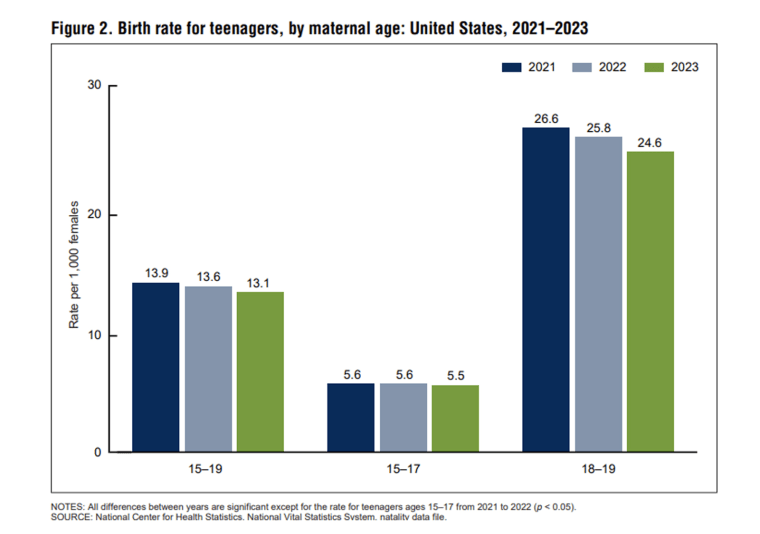The number of women going through pregnancy without prenatal care is growing — even though the overall number of babies born in the U.S. is falling, according to a new report from the Centers for Disease Control and Prevention.
The lopsided trend, published Tuesday by the CDC’s National Center for Health Statistics, may reflect, in part, a growing number of women unable to access OB/GYN care after the U.S. Supreme Court overturned Roe v. Wade in 2022.
“In many counties, you can’t even find a prenatal care provider,” said Dr. Brenna Hughes, executive vice chair of the department of obstetrics and gynecology at Duke University in Durham, North Carolina. “If you have limited resources and have to travel to be able to access prenatal care, it is going to be a deterrent.”
The percentage of mothers without any prenatal care rose from 2.2% in 2022 to 2.3% in 2023, the CDC’s analysis of birth certificates found. Even that slight increase could be detrimental to the health of both mom and baby, said Dr. Kathryn Lindley, a cardio-obstetrician at Vanderbilt University Medical Center in Nashville, Tennessee.
“There’s a lot of baby monitoring that goes on during pregnancy to help us identify any potential health problems,” such as birth defects or unusually high blood pressure, she said.
“High blood pressure related to pregnancy can lead to serious illness or death by causing complications like strokes or seizures or heart attacks,” Lindley said. “It’s really important that all these things get identified and monitored to make sure that both the mom and the baby have a healthy outcome.”
Just under 3.6 million babies were born in the U.S. last year, down 2% from 2022, according to the CDC analysis. The decline resumes a decadeslong fall in births after a slight uptick during the early years of the Covid pandemic, which could have been due to lockdown among couples or a lack of access to contraception at pharmacies or doctors’ offices.
The data, previewed in April, are considered final.
The number of teenage girls giving birth fell, too. From 2022 to 2023, the birthrate among young women ages 15 to 19 declined 4%, from 13.6 to 13.1 births per 1,000 teen girls.

The rate for teenagers 15 to 17 years old seems to have plateaued, hovering around 5.6% since 2021. Still, experts are optimistic.
“Overall this is positive,” said Dr. Allison Bryant, associate chief health equity officer at Mass General Brigham and a maternal-fetal medicine specialist at Mass General Hospital in Boston. “I am cheered by the fact that for now, this seems to continue to fall.”






